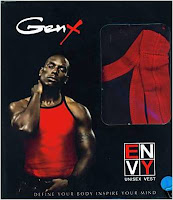Company : Marico
Agency : Publicis
Brand Analysis Count : 409
Revive was launched in 1993. The brand was received very well by the consumer
 community. Revive targeted the urban middle and upper households which was willing to pay a premium for convenience.
community. Revive targeted the urban middle and upper households which was willing to pay a premium for convenience.Revive is also an example of a product that was developed to satisfy a unmet need. Indian households traditionally used starch to stiffen their clothes,especially cotton clothes. The process of making starch and using them was a tedious process for the homemaker. The homemade starch was quite messy and used to leave patches in clothes. It used to smell bad and was not suitable for color clothes.
Revive solved these issues at one go. The brand was initially launched in the powder form. The homemaker could make starch easy by just mixing the powder with water. It offered convenience and saved a lot of time. Another significant advantage of Revive was that it could be used in cold water. Traditional starch needed warm water. Revive also can be used in color clothes which was again a big advantage for the consumers.
It is difficult for the consumer to ignore a product that offers solution to their problems . Revive was successful because it made the life of homemaker little more easier. Revive too had its share of disadvantages. The problem was with the product form and the price. Revive was premium priced compared to the virtually "free" homemade starch. Hence convincing consumers to sample the product was tough. Since the product was in the powder form, consumers was confused about the quantity of powder that should be used.
The real challenge for Revive came when Jyothi Lab launched Stiff & Shine. Stiff & Shine was a liquid stiffener which was much convenient than the powder Revive. Jyothi Lab was trying the same strategy which it used to dethrone Robin powder blue.
But Marico reacted very fast to the challenge posed by Stiff & Shine. It launched the liquid version of Revive very fast and backed it with a heavy dose of campaign.
Revive is focusing on three main attributes in its campaigns- instant starch ( convenience),better stiffness for clothes and no patches.
The fight between Stiff & Shine and Revive is still raging with both brands now linking confidence and social acceptability . Both the brands are running similar campaigns ( using kids) claiming that clothes that are well ironed and shining will earn you self-respect and social acceptance.
Recently Marico took the fight to a new level by launching the liquid blue extension of Revive. I was surprised to see the ad of Revive liquid blue. No further details about this extension is available in the public domain .
Revive is a brand which is promoted heavily by Marico. The instant starch market is still very small and the task of the marketer is to increase the market size rather than to fight for the market share. The recent campaigns connecting the brand and social acceptance is targeted at non-users of this category motivating them to use the product.
The instant starch category has a great market potential and the brands should focus on increasing the category size. There is lot of room for growth for these brands when the category grows . Revive should resist the temptation of extension because the brand will reap rich rewards if it focuses on the category it created.
Related Brand
Ujala





